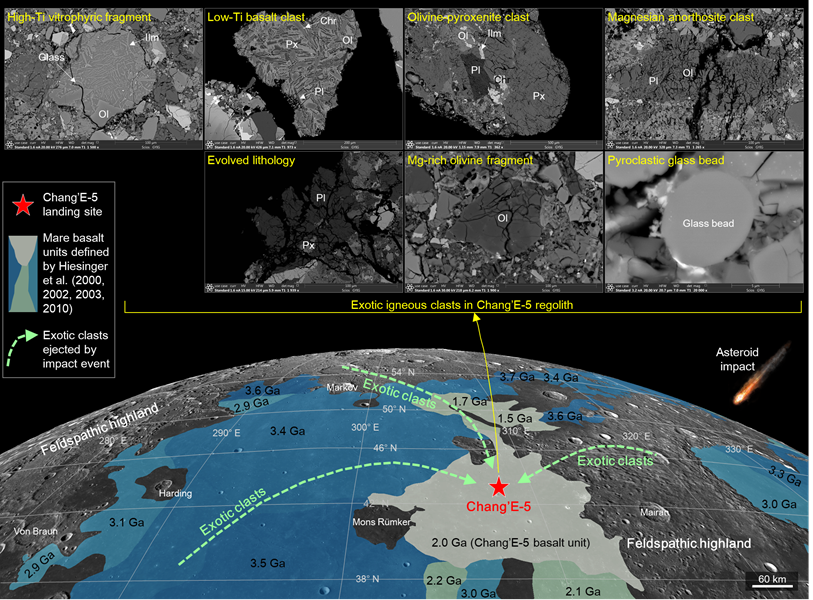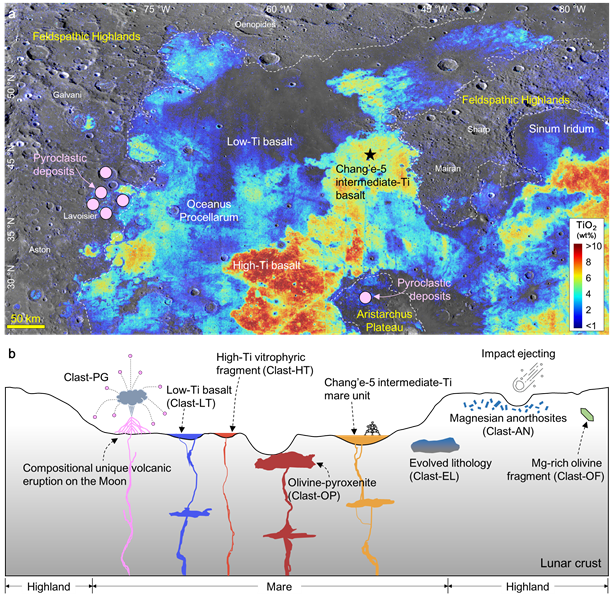Chinese scientists have discovered exotic clasts in regolith from the samples brought back by Chang'e-5 lunar probe in December 2020, suggesting an unexplored terrain on the natural satellite.
The research was carried out by a team from the Institute of Geochemistry of the Chinese Academy of Sciences, who has published their new findings in Nature Astronomy recently.
Scientists studied the lithology and composition of over 3,000 Chang'e-5 regolith particles less than 2 mm in size and identified seven exotic igneous clasts: A high-Ti vitrophyric fragment, a low-Ti basalt, an olivine-pyroxenite, a magnesian anorthosite, an evolved lithology, an Mg-rich olivine fragment and a pyroclastic glass bead.

A schematic diagram shows the Chang'e-5 sampling area finds exotic clasts of the moon. /Chinese Academy of Sciences via CMG
A schematic diagram shows the Chang'e-5 sampling area finds exotic clasts of the moon. /Chinese Academy of Sciences via CMG
These clasts also provide evidence for revealing the diversity of lunar crust composition and magmatic activity.

A schematic diagram explains how the exotic clasts formed. /Chinese Academy of Sciences via CMG
A schematic diagram explains how the exotic clasts formed. /Chinese Academy of Sciences via CMG
The landing area of Chang'e-5 is rich in intermediate-Ti basalt formed two billion years ago, which is younger than geological samples from the Apollo and Luna missions.
The Chang'e-5 samples are the youngest lunar basaltic regolith returned to Earth, providing information on the lithological diversity and regolith gardening processes at young mare regions on the moon over an unexplored time window.
From the Chang'e-5 samples, the research team earlier has successively discovered new lunar mineral, sputtering from the moon's special impact, and suspected asteroid remnants in the lunar soil, contributing to the understanding of the moon's geological evolution.
Read more:
Chang'e-5 samples suggest exploitable water resources on the moon